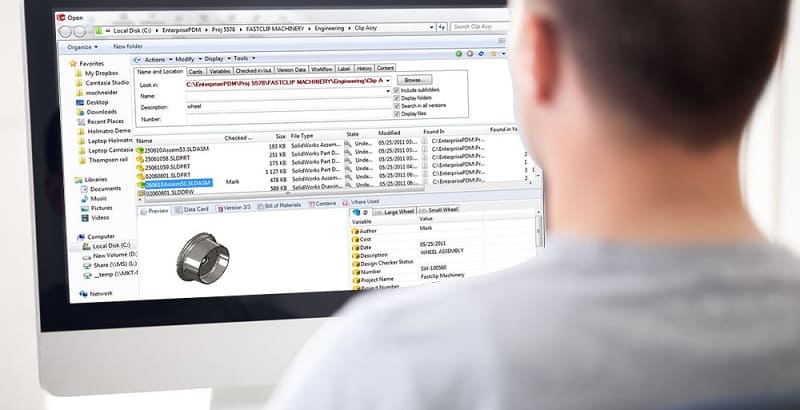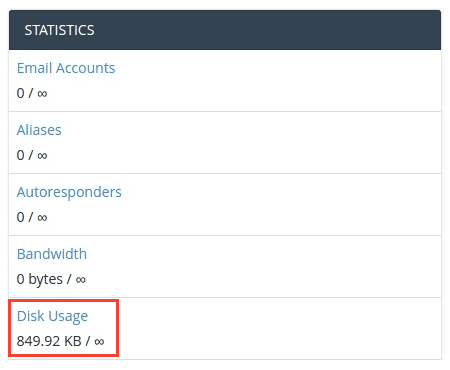If you own a hosting plan or want to hire one, you must have probably come across the term “disk space”. It is mentioned by virtually all hosting companies, along with several other features.
Disk space is one of the most important features of a hosting and understanding its basic concept is fundamental for anyone who has a website. In this article, you will know what disk space is and learn how to estimate and visualize the use of this feature in your hosting.
What is disk space?
In a hosting, disk space is the amount of space available on the server for storing the content of your site. This content includes pages, images, videos, files, databases, among others. In some cases, it can also be used to store emails, but this is not a rule.
Therefore, when you host a website, all your content is stored in that space. As you update it, new content is being stored. This is done automatically and no action is required.
Disk space offered by hosting companies varies greatly, including by type of hosting. In shared hosting, this space is divided among the clients, who occupy the same server. In these cases, it can be limited by client or “unlimited”. Since more robust hosting, such as VPS and dedicated, this space is fixed and is limited to the size of the hard disk installed on the server.
Does unlimited disk space exist?
This question is important and raises many questions. Several companies advertise unlimited disk space, and for lack of information many customers end up feeling harmed. Let’s explain the rules that are usually applied in hosting with unlimited disk space.
The first one is that the purpose of hosting is to host websites. Therefore, there is no limit to the use of disk space, however, all files contained in the hosting must be referring to the site or linked to it in some way. Any storage with a different purpose, such as repository or file sharing, is prohibited by companies.
In cases where companies identify excessive use of server resources that compromise the stability or performance of servers, the support team contacts the customer by proposing a reduction in use or plan an upgrade to a VPS or dedicated server.
As companies often say, it is very rare for a personal website or small business to exceed the limits of this plan. By the way, shared hosting is the most used by people and businesses worldwide and plans even offer up to 100 GB of storage, which is far superior to that used by the vast majority of websites. Still, it is important to know that even unlimited hosting has limits.
Why is it important to track the use of disk space in my hosting?
Knowing how to measure your site’s disk space usage is critical. And this holds true both for those who already use a hosting and for those who plan to hire one.
If you think about hosting a web site for your site, you need to estimate the amount of disk space it will need. That way you will have security in choosing the right hosting. If you already have a web hosting, you need to keep track of your disk space consumption to avoid overflowing the site and leaving the site off the air. As the saying goes, “Preventing is better than cure”, it is important to identify in advance the need for a planned upgrade and migrate hosting with your website up in the air.
How to evaluate the disk space of my site?
Accurately calculating the use of disk space can be a tricky task when the site does not yet exist. The good news is that most of the time, this is not necessary. An estimate is more than enough since you just need to figure out which type of hosting to hire.
As we speak, all content of the site is stored in the disk space of the hosting. In some cases, this space is also used to store emails. Before calculating the required disk space for your website, it is important to understand a few points:
- Images, videos, and audios are often the content that occupies more space in a website;
- Blogs and virtual stores tend to take up more disk space than institutional sites, because of a number of multimedia files;
- Publishing images without any type of optimization can compromise the disk space of your hosting;
- Emails can be the villain of a hosting, depending on the number of accounts and use of the email.
How to estimate space?
As we have seen, multimedia content and emails are the main items to consider when estimating the use of disk space. So if you plan to build an institutional website, you will hardly have problems with shared web hosting. In this type of site, the number of pages and content is small and takes up little space. Most shared plans offer from 10GB to 100GB, which allows for thousands of images on the site.
Blogs in general also fit the shared hosting, except for the very popular ones. In such cases, it is common to have problems with features such as bandwidth and memory before even filling up the disk space. For very popular blogs, you need to hire a VPS Server, Dedicated Server, or a Cloud Server. The exact plan will depend on the characteristics of the site.
Virtual stores follow the same logic. If you sell fewer products, you will have fewer images on the site. eCommerce stores may have up to a million images. See how different it is?
And finally are the emails. If you plan to use it in your hosting, just take into account that each stored email occupies a very small chunk of the hosting. As such, the disk space used for email will grow over time. The number of email accounts will set the speed of this growth. Alternatives such as downloading the emails on the computer or hiring professional email services can alleviate the space consumption of your hosting.
How to identify the disk space used in your hosting?
If you already have a hosted website, finding that information is pretty easy. It is already available on the control panel of your hosting.
To facilitate account management, every hosting company offers a dashboard that allows you to view resource consumption and make the main settings in your account.
Conclusion
As we have seen, disk space is used to store all of the site content. In some cases, also the email. It is an important resource of hosting and should be considered by both whom already has a website and those who are building one.
To estimate the disk space required for your site, consider your site type and the amount of content it will have. Also, think about emails if you use this feature from your hosting. If you already have a hosting, be sure to keep track of your disk space usage. This information can be easily found on the dashboard of your hosting.
Now that you already understand what disk space is and how much you need to host your site, find out what a web server is and how does it function.








